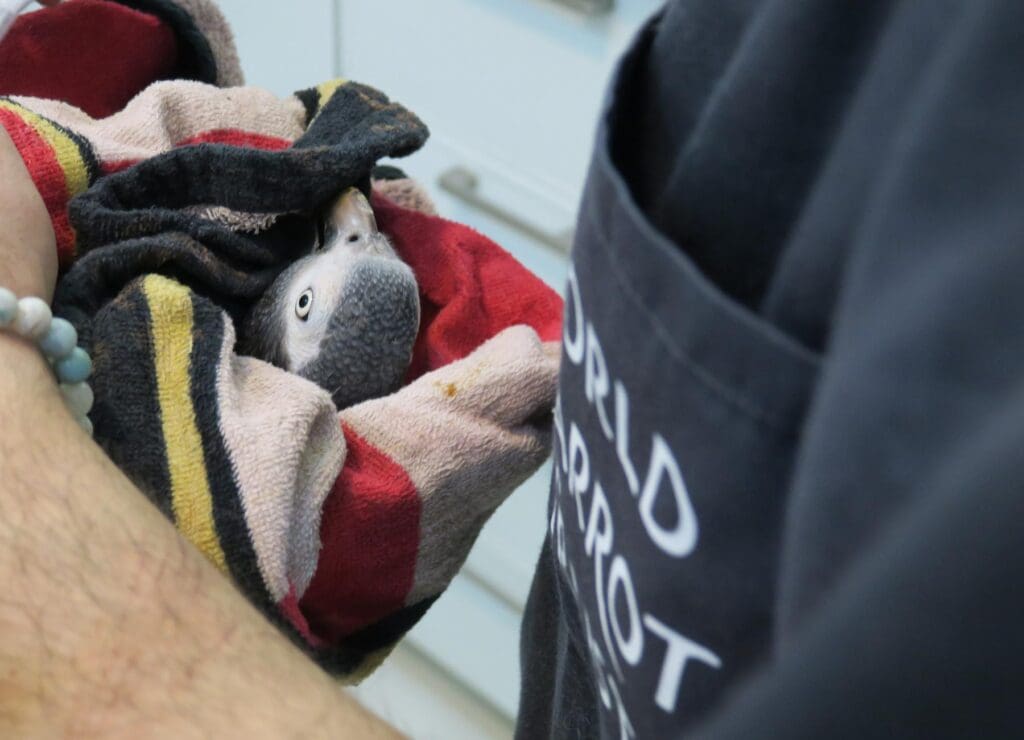Timneh Parrots: Stopping Trafficking
Heavy trapping for the wild bird trade (199,070 individuals exported from 2005-2014) and habitat loss (up to 77%) have caused Timneh Parrot populations to severely decline. The largest groups are considered in Côte d’Ivoire and Liberia, although it has vanished on Mt Nimba and the East Nimba Nature Reserve in Liberia. Local people are reporting seeing them less often.
In 2013, WPT supported Guinea officials in rehabilitating and releasing thirteen confiscated Timnehs. WPT has since worked with regional partners to document the species’ ecology, population and care for confiscated birds. In late 2016, WPT presented at the Conference of the Parties for CITES 17, where delegates voted to uplist Timneh Parrots to Appendix I, thus banning commercial trade. On the Bijagós, UNESCO Biosphere Reserve community-based initiatives have employed former poachers to guard nests. In Liberia, WPT is helping Libassa Wildlife Sanctuary build more capacity and giving their staff veterinary and care training.
In 2023, Libassa received two large groups of Timneh Parrots; 73 were seized in Grand Cedeh County. These birds were rescued from illegal trade following training and awareness activities conducted by the Centre for Environment, Forest Conservation and Research (CENFOR) and funded through WPT/NECF Parrot Conservation Grants. Once the birds have fully recovered they will be released at a specially-chosen site.
Status: IUCN Endangered / Appendix I
Population: Likely fewer than 100,000, decreasing.
Range: Native to the western parts of the moist Upper Guinea forests and bordering savannas of West Africa extending from the Bijagós islands of Guinea-Bissau eastwards through southern Guinea, Sierra Leone, Liberia and Côte d’Ivoire.
Natural history: This species is found in primary and secondary rainforest, forest edges and clearings, gallery forest, mangroves and savanna. Its diet is seeds, nuts, fruits (including oil palm) and berries. The Timneh Parrot will sometimes travel great distances for food and are generally seen in small, but vocal, flocks of a few dozen. Breeding is during the dry season; January-February, and June-July. Its nest is in a high, live tree in a hollow.

